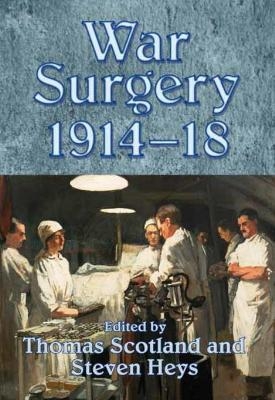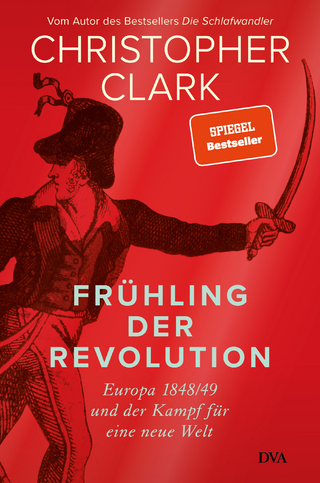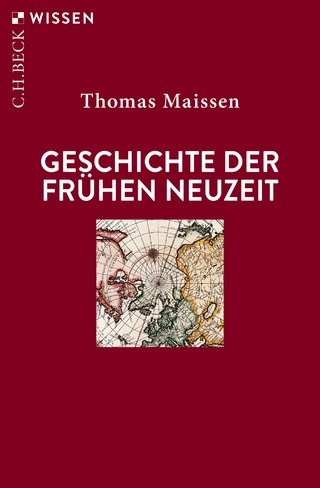
War Surgery 1914-18
Helion & Company (Verlag)
978-1-909384-40-8 (ISBN)
War Surgery 1914-1918 explains how medical services responded to deal with the casualties. It discusses the evacuation pathway, and explains how facilities, particularly casualty clearing stations, evolved to cope with major, multiple wounds to help reduce their mortality. There are chapters dealing with the advances made in anaesthesia, resuscitation and blood transfusion, the pathology and microbiology of wounding, and diagnostic radiology. There are also chapters dealing with the development of orthopaedic surgery, both on the Western Front and in the United Kingdom, the treatment of abdominal wounds, chest wounds, wounds of the skull and brain, and the development of plastic and reconstructive surgery for those with terribly mutilating facial wounds.
Major advances took place in the surgical management of casualties with all types of wound. Initially, abdominal wounds were treated by"expectant treatment". Observations by brilliant clinicians working in a logical and methodical way resulted in early surgical intervention with significant improvements in survival. Management of chest wounds became more aggressive as confidence and experience grew. Major exposure of combined chest and abdominal wounds through an incision opening both the chest and the abdomen became standard practice and these experiences laid the foundations for how these wounds are managed today. There is no doubt, however, that the evolution of orthopaedic surgery was one of the most important developments during the Great War. The vision and action of Moynihan`s surgical colleague, Sir Robert Jones, in establishing the principles of segregation of patients with orthopaedic wounds, unity of control and continuity of treatment became one of the outstanding chapters of British surgery in the twentieth century.
This book is firmly aimed at all those with a passion for the history of this period. While it will be of interest to those in healthcare professions the editors have ensured that the essays are accessible and of interest to a non-medical readership. War Surgery 1914-18 contributes greatly to our understanding of the surgery of warfare. Surgeons working in Casualty Clearing Stations during the years 1914-1918 laid the foundations for modern war surgery as practiced today in Afghanistan and elsewhere.
Tom Scotland - Born in St. Andrews and brought up in the East Neuk of Fife, Tom was educated at Waid Academy in Anstruther. He graduated in Medicine from the University of Edinburgh 1971, becoming a fellow of the Royal College of Surgeons of Edinburgh in 1975. He developed his interest in the Great War whilst a student, when there were still many veterans alive. He trained in orthopaedic surgery in Aberdeen, and after spending a year as a fellow in the University of Toronto, returned to take up the position of Consultant Orthopaedic Surgeon with Grampian Health Board and Honorary Senior Lecturer at the University of Aberdeen. His particular interests were knee surgery, paediatric orthopaedics and tumour surgery, and for three years was lead clinician for the Scottish Sarcoma Managed Clinical network. Over the years he has been a frequent visitor to the Western Front, and has found cycling the best way to visit different places. He has explored many areas of the Western Front with family and friends and since retiring from the National Health Service in 2007 has kept in touch with former colleagues by leading cycling expeditions to the Western Front. He has pursued his interest in the Great War by making a particular study of Aberdeen surgeon, Sir Henry Gray, who played a pivotal role in the development of surgery on the Western Front, and has given various lectures on the development of surgical services during the Great War. In retirement he has completely re-invented himself as a cycling orthopaedic historian. Steve graduated in Medicine from the University of Aberdeen and is a Fellow of the Royal Colleges of Surgeons in England, Edinburgh and Glasgow and currently Dean of the School of Medicine, Medical Sciences and Nutrition at the University of Aberdeen. His surgical specialty is breast cancer surgery and he has research interests in the role of nutrition in the causation of cancer, and has responsibilities for medical education both locally and nationally. He has published more than 200 scientific papers and written many book chapters on different aspects of surgery and played many national and international roles in surgery and the provision of surgical services. His interest in the Great War was sparked by the stories of the Accrington pals and the Lancashire Fusiliers, by his time as a member of the RAMC (V), serving for six years in the 51st Highland Brigade, and by Tom's famous cycling tours around the Western Front where he has the dual role of bicycle mechanic, and because he is a keen bagpipe player, has been appointed as Piper to the tours! He is co-author of three books "War Surgery 1914-1918", "Wars, Pestilence and the Surgeon`s Blade" and "Understanding the Somme 1916-An Illuminating Battlefield Guide."
| Zusatzinfo | 104 b/w photos, illustrations, 37 tables |
|---|---|
| Verlagsort | Solihull |
| Sprache | englisch |
| Maße | 156 x 234 mm |
| Themenwelt | Geschichte ► Allgemeine Geschichte ► Neuzeit (bis 1918) |
| Geschichte ► Allgemeine Geschichte ► 1918 bis 1945 | |
| Medizin / Pharmazie ► Medizinische Fachgebiete ► Chirurgie | |
| Studium ► Querschnittsbereiche ► Geschichte / Ethik der Medizin | |
| ISBN-10 | 1-909384-40-2 / 1909384402 |
| ISBN-13 | 978-1-909384-40-8 / 9781909384408 |
| Zustand | Neuware |
| Haben Sie eine Frage zum Produkt? |
aus dem Bereich


